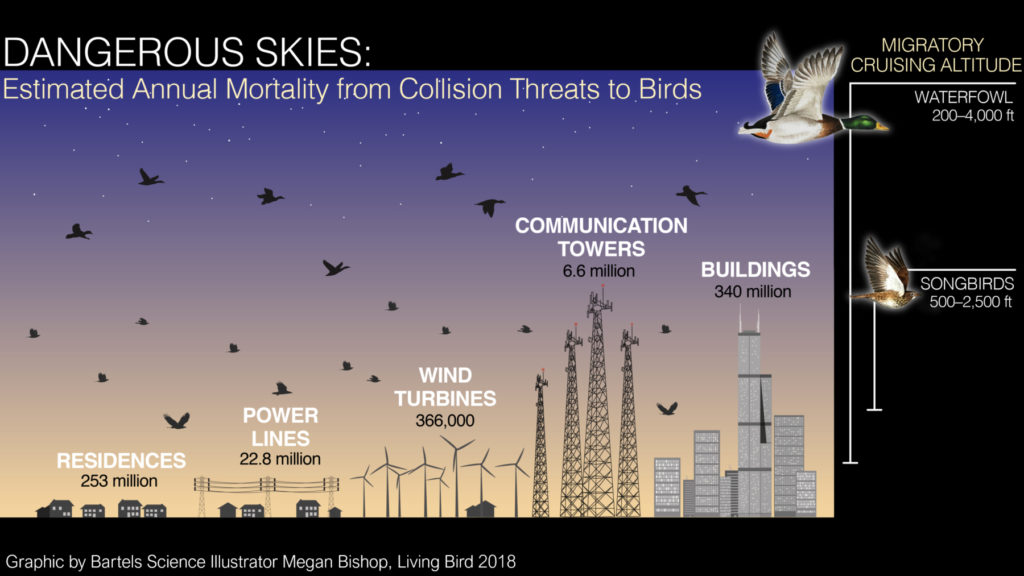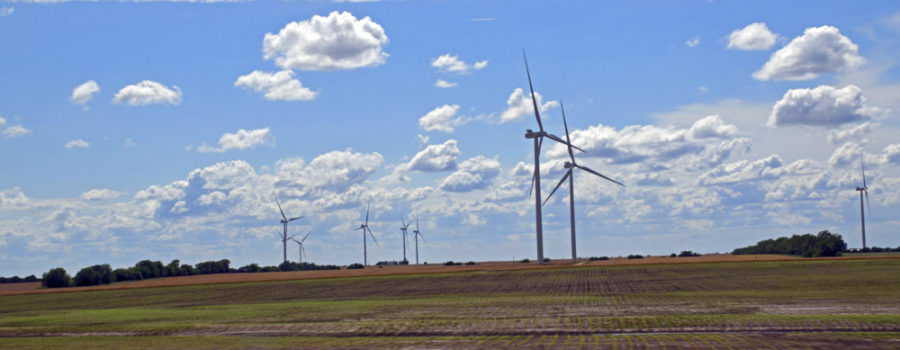“Lights Out” for Migratory Birds
Louisiana Wildlife Federation is calling upon residents and businesses throughout the state to join others in turning off bright or excess lighting from 11 p.m. until 6 a.m. each day between August 15 to November 15 to help protect the billions of migratory birds that fly through Louisiana at night during this period.

Louisiana sits within the Mississippi Flyway migratory path, with the state’s vast wetlands, forests, and coastline serving as critical stops along the birds’ migration routes. During the 2022 fall migration, an estimated 478 million birds migrated through the state of Louisiana. The majority of those birds migrate at night and typically start their nightly migration about 30 to 45 minutes post-sunset, with peak flights between 10 and 11 p.m.
While the dark skies allow the migratory birds to avoid predators, take advantage of calmer air and utilize the moon and stars for navigation, it also brings with it other dangers such as bright artificial lights and the skyglow from larger cities that can confuse the birds, often causing them to fatally collide into buildings or windows.
Individuals and organizations wanting to join others in the Lights Out Initiative should follow these guidelines:
- Turn off non-essential lights nightly from 11:00 p.m. to 6:00 a.m. during the migration period.
- Avoid using landscape lighting on trees or gardens where birds may be resting.
- For essential security and safety lighting, use these dark skies-friendly lighting adjustments:
- Aim lights downwards.
- Use light shields to direct light downwards and prevent an upward glare.
- Use motion detectors and sensors so lights turn on when needed.
- Close blinds at night to limit the amount of light seen through windows.
For building owners/managers:
- Adjust custodial schedules to be completed by 11:00 p.m.
- Ensure lights are turned off after custodial cleaning.
Additional Guidelines for Buildings Over 3 Stories:
- Dim or turn off:
- Exterior/decorative lighting.
- Lobby/atrium lights.
- Perimeter room lights on all levels.
- Lighting on interior plants/fountains.
- Lights on vacant floors.
- Lights with blue-rich white light emissions (over 3000 K in color temperature.)
- Instead use:
- Desk lamps or task lights instead of overhead lights.
- “warm-white” or filtered LEDs outdoors (less than 3000 K in color temperature.)
Migration routes, along with the timing of the flight, can vary from day to day due to a number of factors such as the weather conditions. According to the Cornell Lab of Ornithology BirdCast dashboard, on Monday, August 7, there were an estimated 550,700 birds that crossed Louisiana during the night. Exhibiting the vast difference in flight paths, 276,400 of those birds were estimated to have flown over the Shreveport/Bossier City area, while only 11,200 birds were estimated to have flown over the Baton Rouge area.
BirdCast
Individuals can monitor the bird migration in their area by using BirdCast, a migration dashboard provided by The Cornell Lab of Ornithology. Dashboards for Louisiana and selected cities are:
Louisiana – https://dashboard.birdcast.info/region/US-LA
Alexandria – https://dashboard.birdcast.info/region/US-LA-079
Baton Rouge – https://dashboard.birdcast.info/region/US-LA-033
Houma – https://dashboard.birdcast.info/region/US-LA-109
Lake Charles – https://dashboard.birdcast.info/region/US-LA-019
Lafayette – https://dashboard.birdcast.info/region/US-LA-055
Monroe – https://dashboard.birdcast.info/region/US-LA-073
New Orleans – https://dashboard.birdcast.info/region/US-LA-071
Shreveport – https://dashboard.birdcast.info/region/US-LA-017




Recent Comments